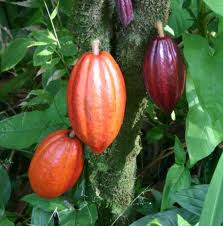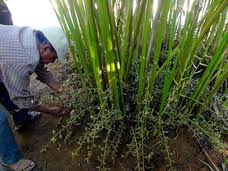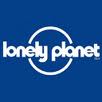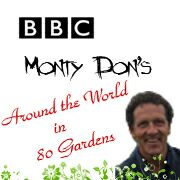We are having generations of experience in this spice farming. We will provide experienced guides during your tour through our spice garden. Also the guides can handle the foreign languages well. For our visitors we will prepare rare food and beverage items on request like masala tea, Lime tea, rare fruits etc. Also in our ayurveda garden you can feel the healing power of various medicinal plants.
Coffee

Coffee is a widely-consumed stimulant beverage prepared from roasted seeds, commonly called coffee beans, of the coffee plant. Coffee was first consumed in the 9th century, when it was discovered in the highlands of Ethiopia. From there, it spread to Egypt and Yemen, and by the 15th century had reached Azerbaijan, Persia, Turkey, and northern Africa. From the Muslim world, coffee spread to Italy, then to the rest of Europe, Indonesia and the Americas. Today, coffee is one of the most popular beverages worldwide
Coffee arabica is a species of coffee indigenous to Ethiopia and Yemen. It is also known as the "coffee shrub of Arabia", "mountain coffee" or "arabica coffee". Coffea arabica is believed to be the first species of coffee to be cultivated, being grown in southwest Arabia for well over 1,000 years
Coffee liberica is a species of coffee that originated in Liberia, West Africa. The coffee tree grows up to 9 metres in height, producing cherries that are larger than the cherries found on Arabica trees. The coffee was brought to Indonesia to replace the Arabica trees killed by the coffee rust disease at the end of the 19th Century
In the mid-1890s, a variety of coffee named coffea stenophylla was discovered in West Africa and brought to the attention of several English coffee plantation owners. Stenophylla was said to be more flavorful than arabica, and even more resistant to the leaf rust problem that devastated most of the plantations.
Pepper

Black pepper (Piper nigrum) is a flowering vine in the family Piperaceae, cultivated for its vegetable, which is usually dried and used as a spice and seasoning. In dried form, the fruit is often referred to as peppercorns. Peppercorns, and the powdered pepper derived from grinding them, may be described as black pepper, white pepper, red/pink pepper, and green pepper, though the terms pink peppercorns, red pepper, and green pepper are also used to describe the fruits of other, unrelated plants.
White pepper consists of the seed only, with the fruit removed.[citation needed] This is usually accomplished by allowing fully ripe berries to soak in water for about a week, during which the flesh of the fruit softens and decomposes.In the U.S., white pepper is often used in dishes like light-colored sauces or mashed potatoes, where ground black pepper would visibly stand out.
Green pepper, like black, is made from the unripe berries. Dried green peppercorns are treated in a manner that retains the green colour, such as treatment with sulfur dioxide or freeze-drying. Pickled peppercorns, also green, are unripe berries preserved in brine or vinegar. Fresh, unpreserved green pepper berries, largely unknown in the West, are used in some Asian cuisines, particularly Thai cuisine
Orange pepper or Red pepper consists of ripe red pepper berries preserved in brine and vinegar. Ripe red peppercorns can also be dried using the same colour-preserving techniques used to produce green pepper.[6] Pink pepper from Piper nigrum is distinct from the more-common dried "pink peppercorns", which are the fruits of a plant from a different family, the Peruvian pepper tree, Schinus molle, and its relative the Brazilian pepper tree, Schinus terebinthifolius.
Vanilla

Vanilla is a flavoring derived from orchids of the genus Vanilla native to Mexico. Etymologically, vanilla derives from the Spanish word "vainilla", little pod. [1] Originally cultivated by Pre-Columbian Mesoamerican peoples, Spanish conquistador Hernán Cortés is credited with introducing both the spice and chocolate to Europe in the 1520s
Bourbon vanilla or Bourbon-Madagascar vanilla, produced from Vanilla planifolia plants introduced from the Americas, is the term used for vanilla from Indian Ocean islands such as Madagascar, the Comoros, and Réunion, formerly the Île Bourbon.
Mexican vanilla, made from the native Vanilla planifolia, is produced in much less quantity and marketed as the vanilla from the land of its origin. Vanilla sold in tourist markets around Mexico is sometimes not actual vanilla extract, but is mixed with an extract of the tonka bean, which contains coumarin. Tonka bean extract smells and tastes like vanilla, but coumarin has been shown to cause liver damage in lab animals and is banned in the US by the Food and Drug Administration.
Tahitian vanilla is the name for vanilla from French Polynesia, made with Vanilla tahitiensis.
French vanilla is not a type of vanilla, but is often used to designate preparations that have a strong vanilla aroma, and contain vanilla grains. The name originates from the French style of making ice cream custard base with vanilla pods, cream, and egg yolks.
Cocoa

Cocoa is the dried and fully fermented fatty seed of the cacao tree from which chocolate is made. "Cocoa" can often also refer to the drink commonly known as hot chocolate[1]; cocoa powder, the dry powder made by grinding cocoa seeds and removing the cocoa butter from the dark, bitter cocoa solids; or it may refer to the combination of both cocoa powder and cocoa butter together.
Not all cocoa is alike! Connoisseurs will explain the distinction between the different varieties with loving enthusiasm. They distinguish between fine cocoa and bulk cocoa.
Criollo (fine, aromatic and bitter) is one of the finest cocoa varieties. The cultivation of this variety requires a great deal of care. The beans contain a high level of aromatic and essential oils and are sold at a very high price. This variety is grown in Ecuador.
Forastero (the largest group) is a bulk cocoa. The pods grow on robust strong trees. This variety yields a rich harvest and the beans have a high fat content.
Trinitario (a cross between the two previous varieties) is widely grown. The fruits produce an excellent cocoa product comparable to the Forastero in taste and quality.
Amenolado, also known as Arriba, is the exception. Thanks to its delicate flavour and the exquisite aroma, this variety is one of the best in the world.
Cardamom

The name cardamom is used for herbs within two genera of the ginger family Zingiberaceae, namely Elettaria and Amomum. Both varieties take the form of a small seedpod, triangular in cross-section and spindle-shaped, with a thin papery outer shell and small black seeds. Elettaria pods are light green in color, while Amomum pods are larger and dark brown.
Black cardamom is sometimes used in garam masala for curries. It is occasionally used as a garnish in basmati rice and other dishes. It is often referred to as fat cardamom due its size ('Moti Elaichi') Individual seeds are sometimes chewed, in much the same way as chewing-gum. In Northern Europe, cardamom is commonly used in sweet foods, pastries or cakes. It has also been known to be used for gin making.
Green cardamom in South Asia is broadly used to treat infections in teeth and gums, to prevent and treat throat troubles, congestion of the lungs and pulmonary tuberculosis, inflammation of eyelids and also digestive disorders. It is also reportedly used as an antidote for both snake and scorpion venom bite
Designed by justinkumily@gmail.com

